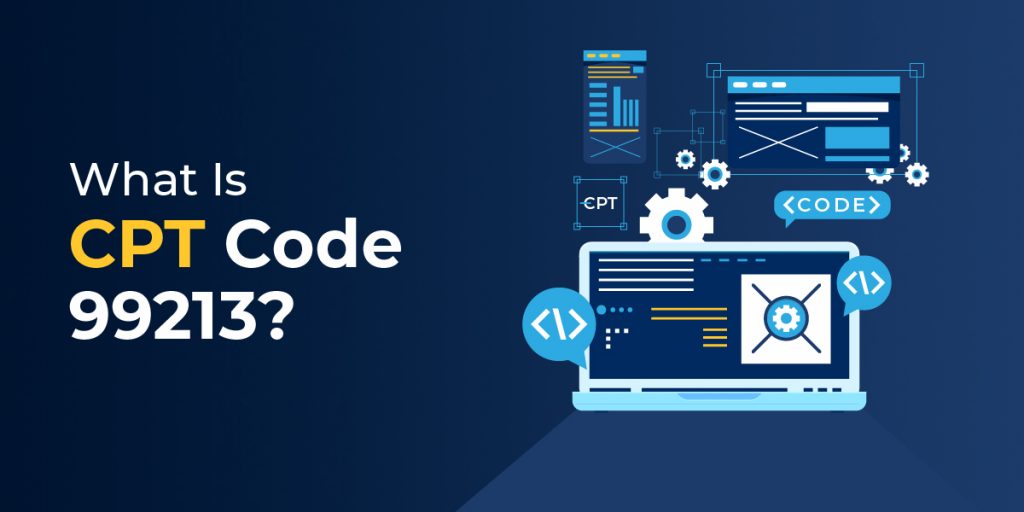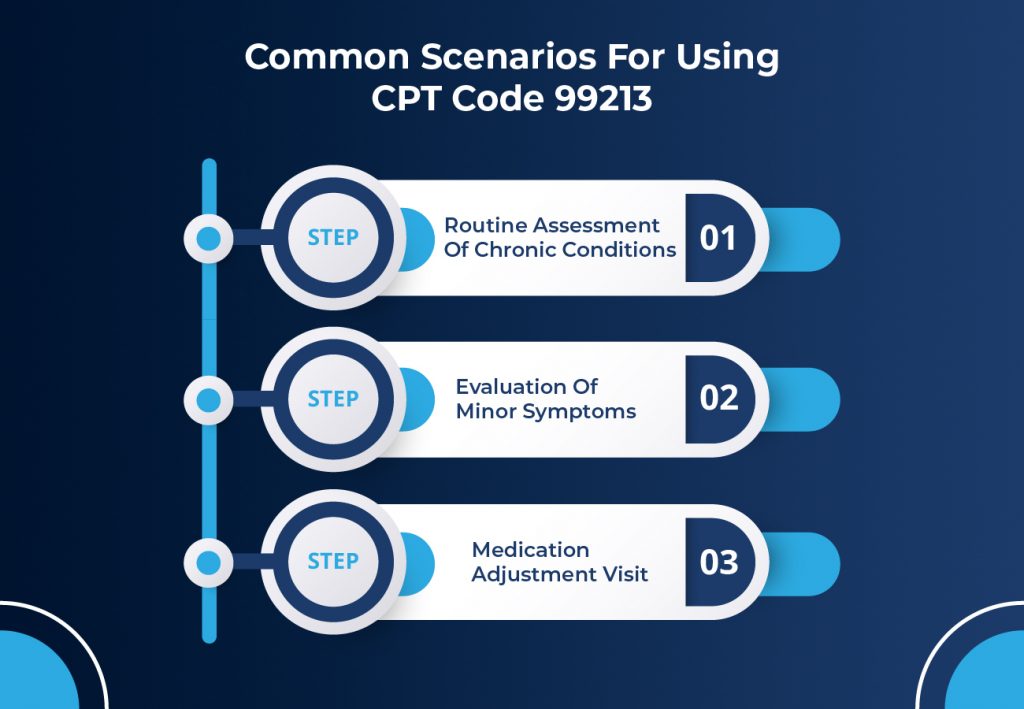Understanding the specifics of CPT (Current Procedural Terminology) codes is essential for accurate billing and ensuring that healthcare providers receive appropriate reimbursement for their services. One such commonly used CPT code is 99213. This code represents a level of service for established patient visits and is used frequently in healthcare practices.
What is CPT Code 99213?

CPT Code 99213 is part of the evaluation and management (E/M) services codes, specifically for established patient offices or other outpatient visits. It represents a mid-level visit, requiring a moderate amount of time and medical decision-making. This code is commonly used for follow-up visits, where patients are returning to assess the progress of a known condition or when presenting with minor health issues.
When to Use CPT Code 99213
CPT Code 99213 is designed for visits involving moderate complexity. Healthcare providers typically use this code for established patients who need routine follow-ups, medication adjustments, or evaluations for symptoms such as headaches, mild infections, or chronic illness management.
To use CPT Code 99213, a healthcare provider must meet specific requirements, which are outlined below.
Requirements for CPT Code 99213
For a visit to qualify for CPT Code 99213, the following elements are typically required:
- History:
The provider should gather an expanded problem-focused history, which includes a chief complaint and a brief history of the present illness, as well as a review of systems.
- Examination:
An expanded problem-focused examination is conducted, which covers affected systems relevant to the patient’s symptoms or condition.
- Medical Decision-Making:
The decision-making process must be of low complexity. This often involves discussing treatment options, adjusting medications, or deciding on follow-up care based on the patient’s condition.
In terms of time, a typical CPT Code 99213 visit lasts around 15 minutes, though time is not always the determining factor for selecting this code. It’s more important to ensure that the visit aligns with the above requirements.
Documentation for CPT Code 99213
Proper documentation is crucial when using CPT Code 99213, as it serves as proof that the visit meets the necessary criteria. In addition to the patient’s chief complaint and relevant history, documentation should include:
- Details of the physical examination and the systems reviewed.
- Notes on the clinical decision-making process, including any assessments, tests ordered, or referrals.
- Information on any treatment adjustments or recommendations made during the visit.
Accurate documentation not only supports the billing of CPT Code 99213 but also protects healthcare providers in case of audits or reviews.
Common Scenarios for Using CPT Code 99213

For clarity, here are some common situations for which CPT code 99213 is eligible:
- Routine assessment of chronic conditions: The diabetic returns for follow-up. The nurse assesses their current health status, monitors blood sugar levels, makes medication adjustments, and recommends lifestyle.
- Evaluation of minor symptoms: A patient presents with mild febrile symptoms that last for a week. The nurse performs objective assessments, recommends medications, and provides instructions for home care.
- Medication adjustment visit: The patient is returned for re-examination after receiving antihypertensive medication. The nurse reviews recent blood pressure readings, adjusts the dosage, and schedules an appointment.
Each of these cases involves moderate complexity and fits the CPT code 99213 standard.
CPT code 99213 vs. Other E/M Codes
It’s important to distinguish CPT Code 99213 from other similar E/M codes, such as:
- CPT Code 99212: This code is used for low-complexity visits, typically shorter and involving less extensive examination and decision-making. These visits are generally problem-focused.
- CPT Code 99214: This is a step up from CPT Code 99213 and is used for more complex visits requiring a detailed history, examination, and moderately complex decision-making.
By understanding the differences, healthcare providers can ensure they are choosing the correct code based on the level of service they provide.
Tips for Optimizing the Use of CPT Code 99213
To effectively implement CPT code 99213, healthcare providers should focus on detailed documentation, staying abreast of coding, and using electronic health record (EHR) systems will be used.
- Proper documentation is key to verifying service levels and preventing insurance claims. This includes capturing the patient’s chief complaints, physical examination data, and decision-making processes such as medication or follow-up care.
- Staying aware of coding guidelines helps avoid discrepancies. Providers can be notified of changes related to CPT code 99213 by regularly reviewing updates from sources such as the AMA or CMS and participating in the regulatory process.
- The use of EHR Systems simplifies documentation and increases accuracy. EHRs provide templates and documentation tools to reduce errors, create responsive systems, and facilitate access to patient records to facilitate coordinated continuity of care and treatment.
Together, these actions support accurate payment, reduce denials of denied payments, and ensure that healthcare providers are reimbursed appropriately for their services.
Conclusion
CPT Code 99213 is vital in medical billing for established patient visits, allowing healthcare providers to bill for mid-level evaluations effectively. Proper coding ensures fair reimbursement and supports the continuity of care for patients. Whether you’re a provider new to medical billing or a seasoned professional, this guide offers valuable insights into using CPT Code 99213 efficiently in your practice.

